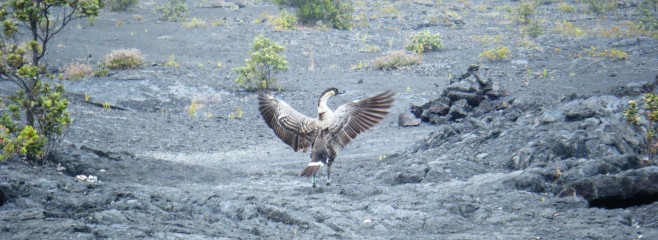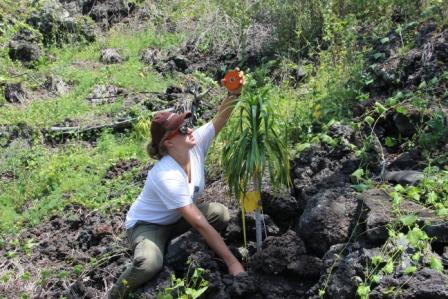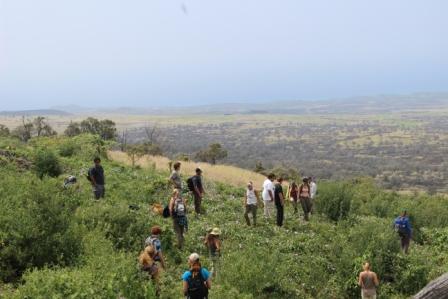Wednesday – Ka’upulehu
The sea and the sky frame our work, but the forest houses us. Our return to Ka’upulehu Dry Forest is marked with familiarity, happiness, and comfort, but perhaps also expectation as well. The forest and the people here have given much to us. It is our kuleana to give back now.
We start the day visiting a beautiful old halepepe tree that is blooming. It has stood guard over the crumbling lava fields and younger seedlings for much longer even than Uncle Keoki and Auntie Yvonne. It stands as a stark reminder of what this forest once was, but also as an inspiration for what it could look like with our help.
From the old tree we descend deeper into the forest and begin out planting. The small trees are lush and green but also delicate. Planting them in the dry sun-heated lava seems almost a death sentence despite reassurances that the trees have a 70% survival rate. We planted 100 trees mixed between mamane, lama, a’ali’i and other more exotic variaties. The work is slow but satisfying as we start with a barren hole in the scorched dirt, and leave behind a small spot of green.
In the afternoon we move to the older Cornell out plants for monitoring. Trees planted one, two, three, four, and five years ago are measured for basal diameter and height. Staring at the small forests planted by our predecessors, goosebumps run up more than a few of our arms. Where we planted small plants in a sea of black rock, here a forest of green and life holds the land. The thought that time and sun and rain would continue to build our forest to not only match these patches but also grow past and between and among them into one forest captivates the mind.
After a long day of planting and monitoring we hui up in the clearing among the trees where we were first introduced to Ka’upulehu. In many ways we are still the gaggle of college kids from the mainland in a place that has welcomed many others before us. Yet standing beneath the trees that we have become a small part of, with the people we have befriended, there is much that has changed in us as well. As we talk story and sing our ‘oli mahalo the forest seems approving, if still hopeful for more help in the future.
Nathan Greene



